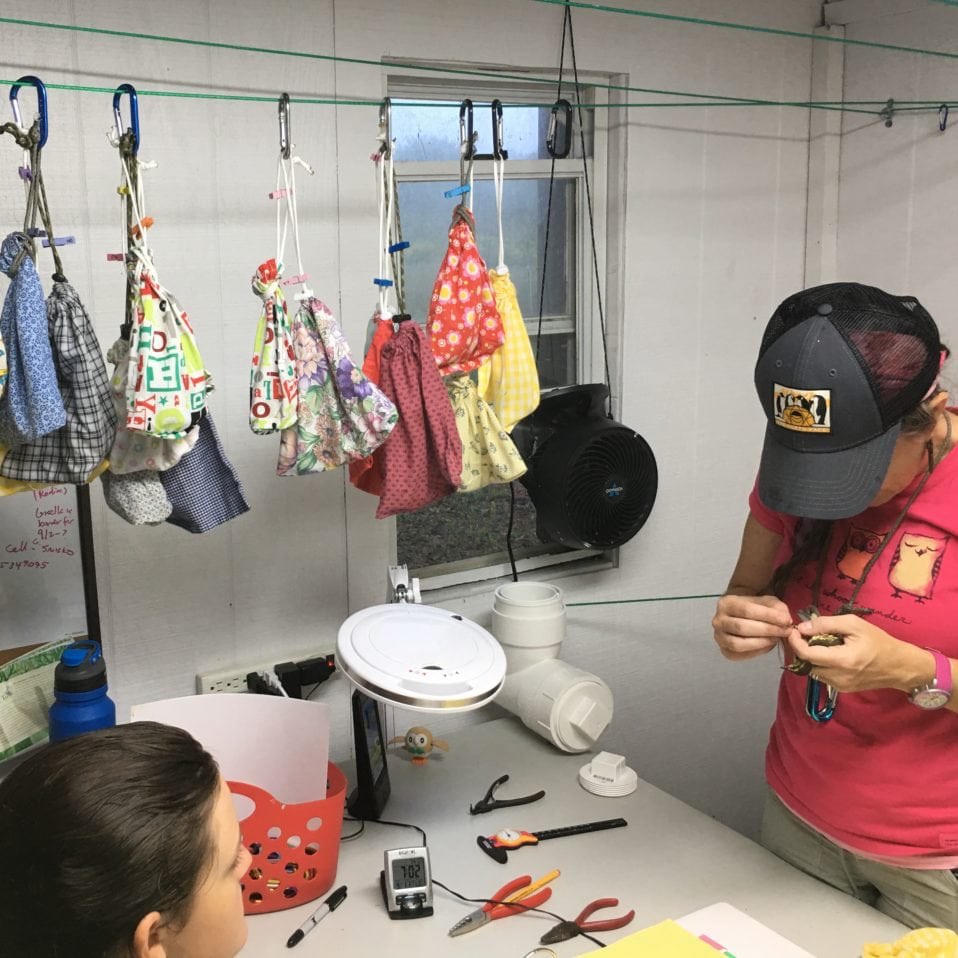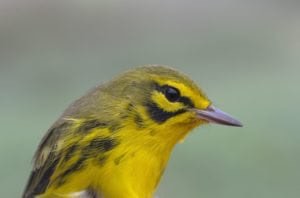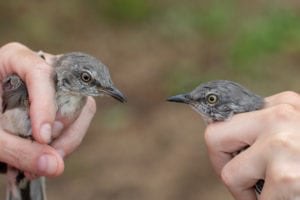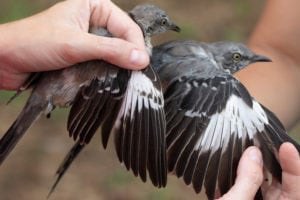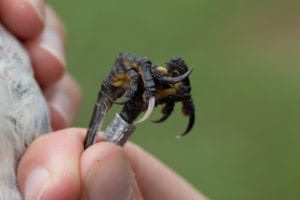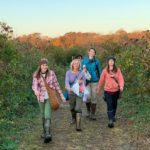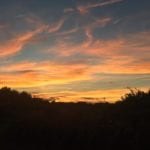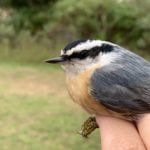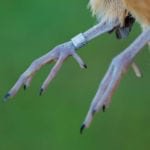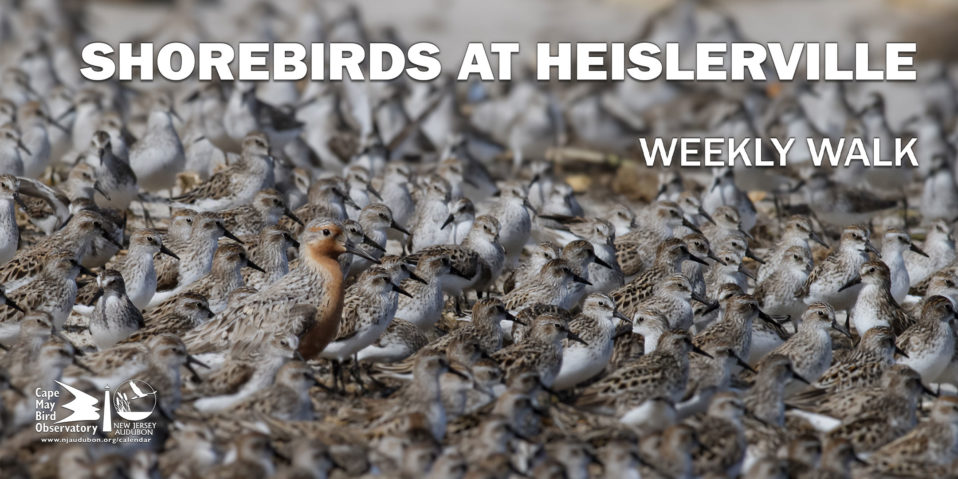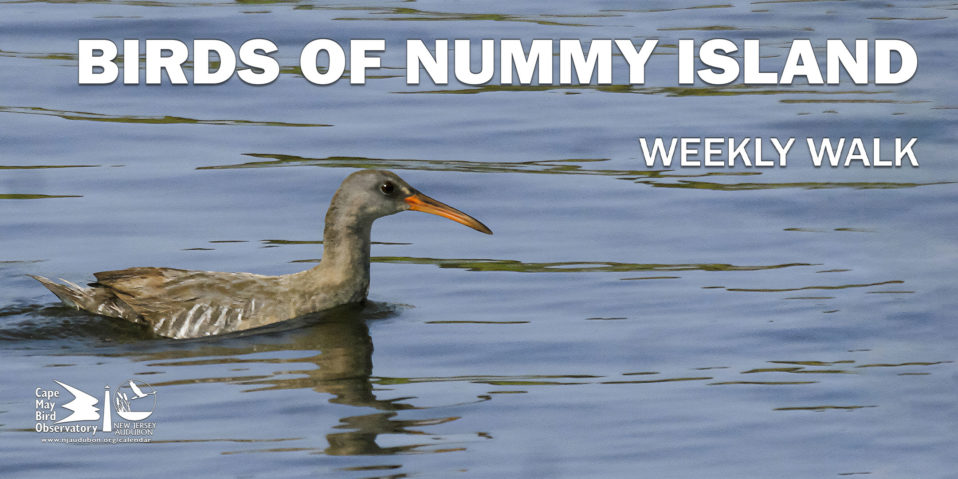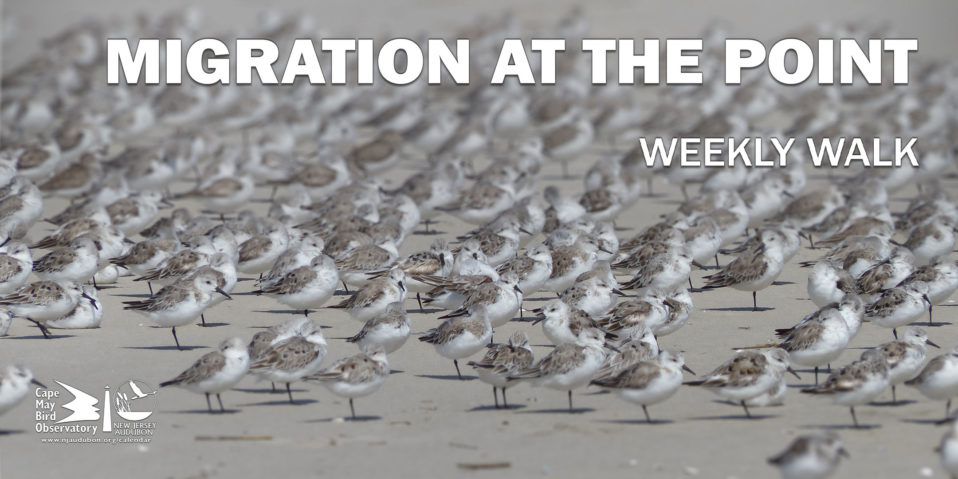By Laura-Marie Koitsch, 2018 Bander In Charge
The fourth week of the inaugural season of NJ Audubon’s Cape May Bird Observatory banding station began and ended the same way, with birthday celebrations and closing early due to the heat index surpassing 100F.
September 6th (David La Puma’s birthday) was particularly hot and humid, with strong SE winds the previous night. Although we only captured 16 individuals, it was of 10 species. So, even though it was a slow day, we were at least seeing good diversity. We also saw a Least Bittern out by the nets in the marsh. This was exciting as LEBI are secretive marsh birds which, while rarely seen, are quite common visitors (and sometimes breeders) of the Meadows marshes.
- Melissa holds the Prairie Warbler in ‘photographer’s grip’ while Laura-Marie photographs the bird. © David La Puma
- A gorgeous Prairie Warbler © Laura-Marie Koitsch
The winds on the night of the 6th were finally in a more favorable direction, out of the NW, and the radar lit up accordingly. Once again though we had to close after only four hours of netting due to the heat. We banded 59 individuals of 11 species. Almost all of the 27 newly banded Northern Waterthrush had either zero fat or just a small trace, indicating that they were most likely recent arrivals to The Meadows, especially when compared to our recaptured NOWA, who were showing significant weight gain. We also heard a Marsh Wren singing out by the marsh nets, which when paired with the previous day’s Least Bittern sighting, made the trip out to check on those nets even more exciting.
The winds on the night of September 7th were once again favorable and there was a great movement on the radar. Local birders were also reporting a large number of nocturnal flight calls from Veeries, Bobolinks, and surprisingly also from Eastern Kingbirds, which is a species that is generally thought to be a diurnal migrant. We opened a half hour late due to an early morning shower and closed after only two hours when the rains came back with a vengeance. Even with our shortest banding day yet, we managed to band 34 individuals, 26 of which were Northern Waterthrush and were captured on the first round.
There was no banding on September 8th or 9th due to scattered storms and high winds. We went down to check on the station several times to make sure that everything was secure and to generally see how everything was faring in the winds. On the afternoon of the 9th, whilst walking around the station we noticed that there wasn’t a single net lane that didn’t have birds hanging out low and/or calling. We suspected that the 10th might be a big morning, especially given that the predicted winds would not be in the birds’ favor.
- Two young Northern Mockingbirds. Note the variation in eye color!
- Wing variation in young mockers. Could the one on the left be female and the one on the right be a male?
- Check out that toenail!
September 11th was our third biggest morning this season as well as the first time in ten days that we did not have to close early due to weather. We banded 59 Northern Waterthrush, more than half of the 107 individuals of 18 species that we banded that morning. The biggest thrill of the week came on the 11:10 net round, when a NOWA that had been previously banded ten days prior was recaptured. The fact that it had been hanging around and utilizing the habitat at the Meadows for ten days was already exciting but, then we discovered that it had gained an astonishing six grams, more than 1/3 of its original body weight!! If we weren’t already looking into the various research questions that we might be able to answer (and new ones that we might ask!) regarding Northern Waterthrush, recapturing this individual pretty much sealed the deal.
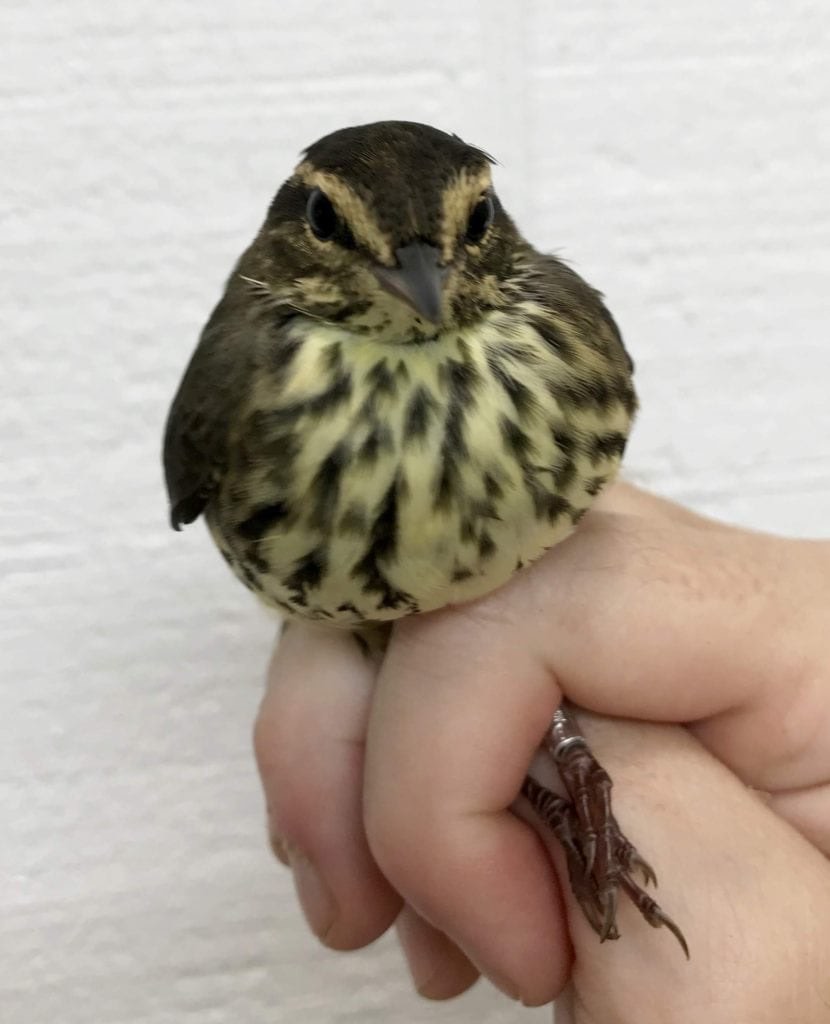
A very very fat Northern Waterthrush. Live long and prosper, little buddy! © Laura-Marie Koitsch
After finally being able to get in a full six hours of banding on the 11th, September 12th we were back to closing early due to the heat. As we continued to have ESE winds during the night as well as during the day, our banding totals were cut down significantly; we banded 41 individuals of 10 species. Once again, Northern Waterthrush dominated both the newly banded individuals and the recaptures totals.
Overall for the fourth week of banding, we were able to operate seventeen nets on five days for a total of 382 mist net hours (mnh). We had 257 new birds of 23 species. Northern Waterthrush were our top species banded with 137 individuals, more than half of the total of all species banded that week. 18.28% of the newly banded individuals were After Hatching Year (AHY) birds. Interestingly, we are seeing a significant number of adult Northern Waterthrush, over 16% of individuals caught this week. While we would expect to see a higher than average number of adults with species that breed locally (ie, Gray Catbird and Common Yellowthroat), capturing both adults and first years of a species that breeds to the far north of us is exciting as it shows that The Meadows may well be an important stop over area for both age groups.
We recaptured 45 individuals that we had previously banded, 91.1% of which were neotropical migrants. As previously mentioned, the Northern Waterthrush that had gained 6 grams upon recapture was one of the highlights of the week. All across the board though we were seeing significant weight gain in many neotropical migrants, both in those that do not breed near us such as Northern Waterthrush as well as those that are local breeders, such as Common Yellowthroat. Many of the Gray Catbirds that we are recapturing are still in active molt as are the Carolina Wrens, the difference being that the former is a neotropical migrant whereas the latter is not.
Total species this season: 45
Total birds banded this season: 1,050




